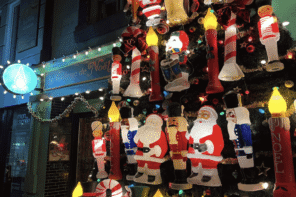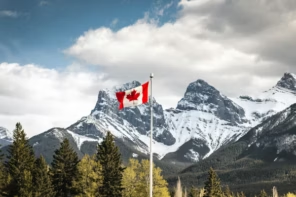I come from a pretty traditional Korean family. As the oldest child of an immigrant family, Korean traditions and customs have remained a large part of my sense of self. While I think that I’ve adjusted nicely now, it was definitely a struggle at first to accept the unique cultural identity I was developing. While my friends would talk about fighting with their parents, I would secretly be in awe of the fact that they could even speak up to them. They would bring ham and mustard sandwiches, while I would bring fried rice in a thermos. One other big disparity was what we looked forward to. When we turned 18, they were ready to go out and get wasted on beers and shots. In my case, I was looking forward to the day I would be able to sit with my father at the dinner table, and share a bottle of soju.
“Despite that fact that many people still do not know what it is, soju is now the world’s #1 selling type of alcohol in terms of pure volume, with the world’s largest soju brand, Jinro, clocking in at 78 million 9-litre cases in 2018″
While it has become increasingly popular in foreign markets, many people still do not know what soju is, especially in North America. Soju is a clear, alcoholic beverage that is distilled from rice and other starches. It has an alcohol level that can range from 16% to 45%, and normally comes in a clear, green bottle. It was developed before the Korean War, and has remained a proud Korean creation in the years following. In terms of taste, imagine a slightly sweeter, more viscous version of vodka.
Despite that fact that many people still do not know what it is, soju is now the world’s #1 selling type of alcohol in terms of pure volume, with the world’s largest soju brand, Jinro, clocking in at 78 million 9-litre cases in 2018. This means that Jinro alone accounted for more than 700 million litres of soju on the world market. Of course, the majority of sales are based in South Korea, but that alone should speak volumes to how much soju means to the Korean people.
Based on description alone, some might think of soju as a diluted version of vodka. This is true, but I believe that this does not capture all of the symbolic meaning of the drink. Soju is a drink that is meant to be had with food, and most importantly, with people. This is where the differences really begin, as there is very specific etiquette that needs to be maintained when sharing the drink with other people. For starters, the oldest person at the table is the one who pours the first shot for everyone, with all the younger people positioning their glasses to be as comfortable as possible for the older person. In addition, after you bring your glasses together, the younger ones must turn their heads away from the table and drink with both hands on their cups.
The thing is, no one complains about all these rules, because the point of soju isn’t the intricacies, or even the taste — in all honesty it tastes pretty bad. (Nowadays though, soju brands have been trying out infusing soju with different fruit flavours, which has led to some promising results. Check them out here.) Soju is called “the people’s liquor” in Korea because it brings Korean people together. Whether it be to celebrate an occasion or to mourn the loss of a loved one, soju is a constant in Korean culture, connecting older and younger generations. It can represent the maturing bond between a parent and their child, between lovers, between the closest of friends; this is what makes soju truly unique.
“Here in Montreal, the only places that you can buy soju are bars and restaurants with premiums attached to the name, like Ganadara Bar and Mon Ami, where a bottle of soju goes for anywhere from $16 to $25.”
It is also known as the people’s liquor because of the low cost at which one can buy it in Korea, which may be why it has had trouble translating to the North American market. In Korea, you can buy a bottle of soju for three to five dollars at the local bar, which makes accessibility much easier. Here in Montreal, the only places that you can buy soju are bars and restaurants with premiums attached to the name, like Ganadara Bar and Mon Ami, where a bottle of soju goes for anywhere from $16 to $25. It is more of the same across North America.It may be a product of tariffs and a heightened cost of living, but this undercuts the symbolic meaning that soju has, not just as an alcoholic beverage, but as an accessible liquor that can cultivate relationships.
This is my plea to the Korean restaurants here in Montreal. Consider lowering your prices. As a Korean-Canadian person, I have great pride in soju as a means of conveying Korean culture and bringing people together. I believe that by making it more accessible to a larger range of people, not only will it serve as a conduit for culture, but also as a means of increasing sales going forward when more and more people buy into the people’s liquor.








